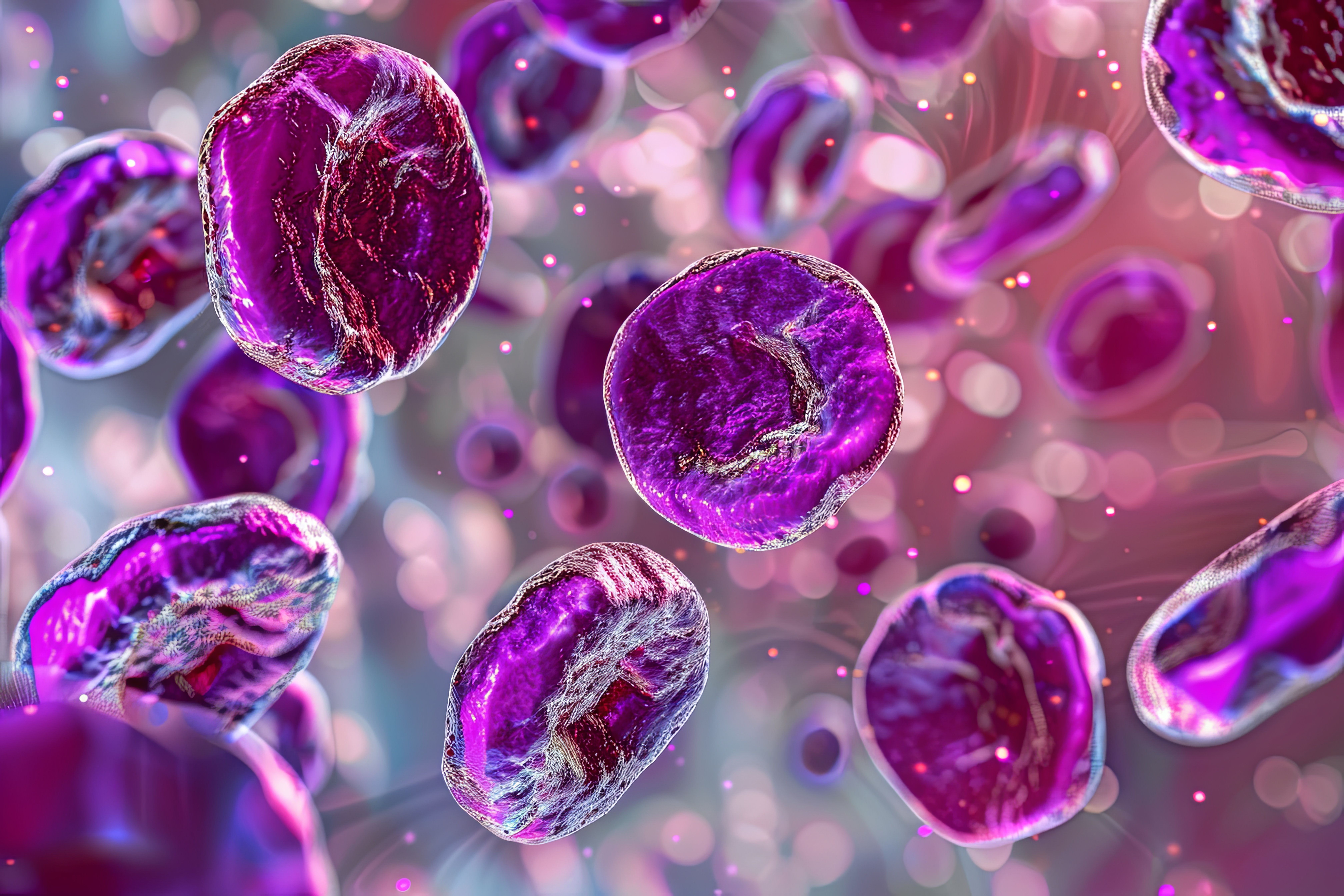- Bone Health
- Immunology
- Hematology
- Respiratory
- Dermatology
- Diabetes
- Gastroenterology
- Neurology
- Oncology
- Ophthalmology
- Rare Disease
- Rheumatology
Switching to Rituximab Biosimilars Is Safe, Effective for Patients With Oncohematological Diseases
Patients with oncohematological diseases switching to rituximab biosimilars experienced similar safety and efficacy, highlighting biosimilars' potential for cost-effective treatment across various medical conditions.
Patients with oncohematological diseases switching to rituximab biosimilars experienced similar safety and efficacy, highlighting biosimilars' potential for cost-effective treatment across various medical conditions. | Image Credit: sovova- stock.adobe.com

Patients with oncohematological diseases who switched from reference rituximab (Mabthera) to rituximab biosimilars demonstrated similar safety and efficacy, according to study published in Cancers.1
Rituximab is a monoclonal antibody drug that attaches to and marks specific white blood cells, called B cells, for destruction.2 Patients with autoimmune conditions and types of blood cancers typically receive rituximab as a form of treatment. In 2017, both rituximab-abbs (Truxima) and rituximab (Rixathon) were approved as biosimilars of originator rituximab by the European Medicines Agency (EMA).3
The development of biosimilars has led to greater access to treatments, especially in the cancer landscape, where biosimilars have effectively reduced costs of care while generating cost-savings for health delivery systems.4 By using monoclonal antibodies, advanced treatment methods have emerged, creating more options for patients.1 Rituximab biosimilars have been adopted to treat hematologic malignancies, particularly non-Hodgkin lymphoma.
Wider adoption of biosimilars can be partially attributed to a stepwise approach, a process that compares the originator with the biosimilar product that the EMA, FDA, and World Health Organization follow as guideline requirements. Despite these techniques, many clinicians remain hesitant when switching patients from the reference product to the biosimilar based on concerns regarding immunogenicity or adverse reactions, despite sharing the same efficacy.
The prospective multicenter observational study set out to collect clinical information about adverse drug reactions related to the rituximab originator or biosimilars along with switching practices in patients with oncohematological diseases.
Only patients who did not have previous administrations of rituximab were considered in the adverse drug reaction analysis. The study focused on 505 (79.8%) incident cases across 13 Italian hematology centers.
Of the 505 patients (42% women) included in the study, they were either affected by non-Hodgkin lymphoma (n = 453), chronic lymphocytic leukemia (CLL) (n = 33), or 1 of the diseases included in the Italian Law 648/96 (n = 19). Patients were an average of 66.8 years old and had a median follow-up time of 317 days.
Rituximab infusions across patient populations ranged between rituximab-abbs (53%), rituximab biosimilar (24%), originator subcutaneous treatment (19%), and originator intravenous treatment (3%). Each patient had an average of 7.3 infusions.
There were 392 (78%) of the 505 naïve patients who did not receive any “switch” between both rituximab-abbs (n = 257) and rituximab (n = 130) while 113 (22%) patients experienced a “switch”. More than half of patients were treated with rituximab biosimilar combined with chemotherapy (57%). There were 25 patients who were treated with biosimilar rituximab monotherapy, including 88% who were affected by non-Hodgkin lymphoma.
“Switcher” patients (69%) switched to the subcutaneous originator (n = 78 patients) while the overall majority switched to the second infusion after receiving the initial intravenous originator (n = 40 patients), rituximab-abbs (n = 15 patients), or the other rituximab biosimilar (n = 2 patients) at the first infusion.
Adverse drug reactions were associated with the age of the patient at diagnosis (P = .05) and higher neutrophil count (P < .01). They were more common among patients with indolent non-Hodgkin lymphoma (18.8%) compared with patients who had highly malignant non-Hodgkin lymphoma (15.6%), those with CLL (15.2%), and patients with conditions treated under Law 648-1996 (15.8%). There were 21 adverse drug reactions that occurred in 113 patients (18.8%) with unspecified non-Hodgkin lymphoma. The most common adverse drug reactions were general disorders and administration site conditions.
At least 16.8% of participants experienced 1 type of adverse drug reaction with higher prevalence among patients who did not switch (20.7%), especially those who received biosimilars rituximab (24.6%) and rituximab-abbs (17.9%). Adverse drug reactions were also reported more frequently among the first infusion (52%) compared with the second infusion (20%).
The COVID-19 pandemic created study limitations by delaying access to clinics with limited time dedicated by health care professionals to collect data as well as research. The pandemic had an impact on treatment decisions, introducing unprecedented challenges, disruptions in supply chains, and the need for telehealth.
The study reflects no increased adverse drug reactions when switching between biosimilars or from the originator drug to the biosimilars. Results indicate use of rituximab biosimilars is deemed safe and effective in real-world clinical practice for patients with oncohematological diseases.
These findings “can offer significant and valuable evidence that complements the findings of randomized controlled trials regarding effectiveness and safety of biosimilars in various medical conditions and treatment scenarios,” concluded the study authors.
References
1. Urru SAM, Mayer F, Spila Alegiani S, et al. The importance of real-world data in evaluating the safety of biosimilars: a descriptive study of clinical practice in an oncohematological Italian population. Cancers (Basel). 2024;16(19):3419. Published 2024 Oct 8. doi:10.3390/cancers16193419
2. Rituximab. Cancer Research UK. October 21, 2022. Accessed December 5, 2024. https://www.cancerresearchuk.org/about-cancer/treatment/drugs/rituximab
3. Biosimilar approvals. The Center for Biosimilars®. November 18, 2024. Accessed December 5, 2024. www.centerforbiosimilars.com. https://www.centerforbiosimilars.com/biosimilar-approvalshttps://www.centerforbiosimilars.com/biosimilar-approvals
4. Malakar S, Gontor EN, Dugbaye MY, et al. Cancer treatment with biosimilar drugs: a review. Cancer Innovation. 2024;3(2). doi:10.1002/cai2.115
Newsletter
Where clinical, regulatory, and economic perspectives converge—sign up for Center for Biosimilars® emails to get expert insights on emerging treatment paradigms, biosimilar policy, and real-world outcomes that shape patient care.
